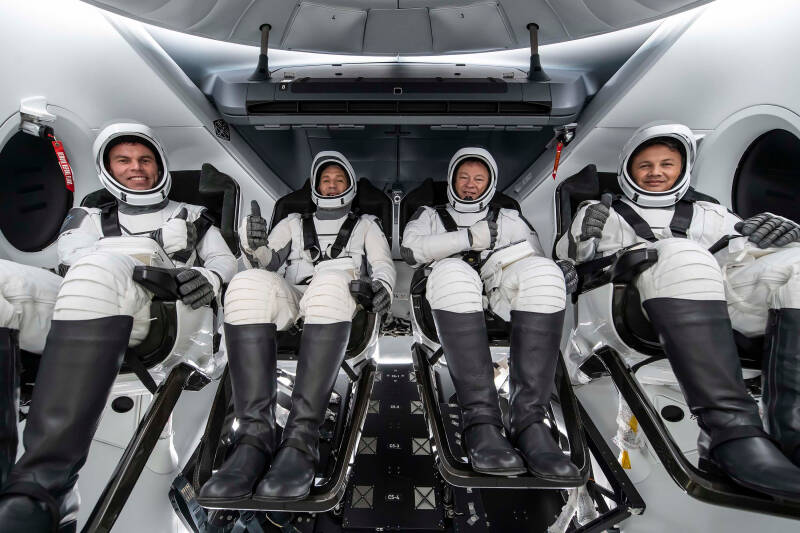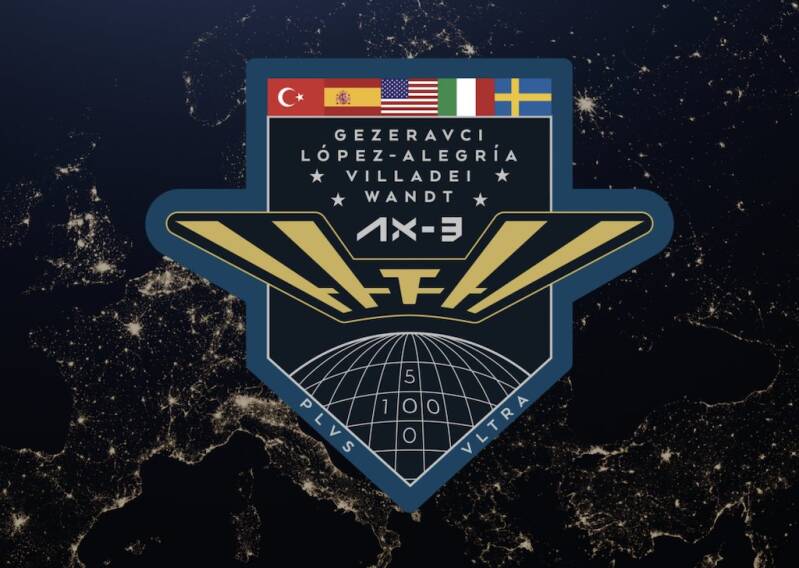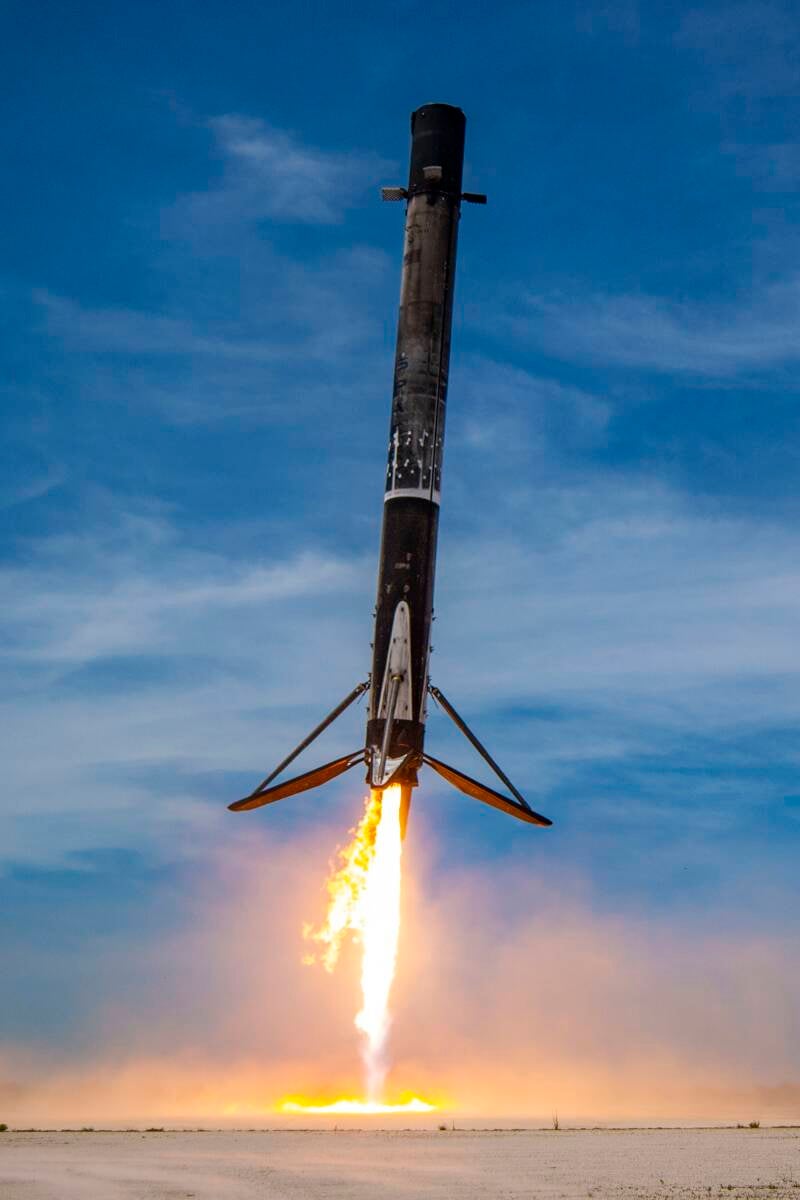SpaceX will be conducting a crewed launch from Florida’s Space Coast scheduled next week for their commercial partners, Axiom Space Inc.

Axiom-3 Crew during training. Photo credit SpaceX
Axiom Mission 3, or Ax-3, will be Houston-based Axiom Space’s third crewed mission, using SpaceX workhorse Crew Dragon atop Falcon 9 (block 5) to send commercial astronauts to the International Space Station. Axiom Space announced Wednesday it had successfully completed its internal Flight Readiness Review for Ax-3, bringing it one step closer to a planned Falcon 9 launch at 5:11 p.m. Et, on Jan. 17th-18th, From LC-39A, Kennedy Space Center.
Ax-3 crewmembers will spend 14 days aboard the space station performing microgravity research, technology demonstrations and outreach engagements, according to Axiom Space. If all goes well, they’ll dock around 5:15 a.m. ET on Jan. 19.
Comprising the latest roster — which Axiom notes will be the first all-European commercial astronaut lineup to launch to the space station — is Walter Villadei of Italy as pilot and Michael López-Alegría of Spain as commander with mission specialists Marcus Wandt of Sweden and Alper Gezeravcı of Turkey.
López-Alegría said that the Axiom missions continue to set the stage for Axiom’s plans to build its own space station by the end of the decade.

“We want that commercial space station to be a destination not only for the users of the ISS today, but also many more people, entities, researchers, countries around the world,” he added.
The mission’s Launch Readiness Review, planned for Tuesday, will be its next milestone, according to Axiom Space. Leaders with Axiom, NASA and SpaceX will gather to discuss the launch vehicle, mission hardware and readiness for launch, with a pre-launch media teleconference set for about an hour afterward.
Ax-1 launched in April 2022 from Kennedy Space Center, marking SpaceX’s first private charter flight to the space station after two years of taking up NASA astronauts. López-Alegría, a former NASA astronaut, was also on this flight, as well as businessmen Larry Connor, Mark Pathy and Eytan Stibbe. The mission was originally expected to last eight days as the private astronauts were kept busy with science experiments, but undocking was postponed for almost a week due to unfavorable weather at the splashdown site.
About a year later in May 2023, Ax-2 launched from KSC, sending a sonic boom across the Space Coast as the Falcon 9 booster landed at Cape Canaveral Space Force Station. Its crew included Peggy Whitson, a retired NASA astronaut, John Shoffner of Tennessee, and Ali Alqarni and Rayyanah Barnawi from the Kingdom of Saudi Arabia. Axiom Space had said at this point that the three businessmen on Ax-1 paid $55 million each for the trip, but it didn’t give a price for Ax-2′s seats.
Axiom Space's third commercial human spaceflight mission will be the first all-European commercial astronaut mission to launch to the space station, which includes: Ax-3 Commander Michael López-Alegría, dual citizen of the U.S. and Spain; Pilot Walter Villadei, Italian Air Force Col. representing Italy; Mission Specialist Alper Gezeravci representing Türkiye; and Mission Specialist Marcus Wandt, ESA project astronaut representing Sweden.

Photo credit Axiom
Ax-3 Commander Michael López-Alegría is a former NASA astronaut and was the commander of Axiom Mission 1, the first all-private astronaut mission to the International Space Station.
Ax-3 Mission Specialist Alper Gezeravci will be the first Turkish astronaut to launch to space.
Ax-3 will be the first commercial astronaut mission to include a European Space Agency (ESA)-sponsored national astronaut, ESA project astronaut Marcus Wandt.
Ax-3 Pilot Walter Villadei and Mission Specialists Alper Gezeravci and Marcus Wandt all have extensive military training and are professional operators with flight crew experience in their nation's air forces.
During the two-week mission, the crew will conduct more than 30 experiments, including several to test materials and technology to protect astronauts from radiation and other harsh conditions in space.
Here are highlights of some of the technology demonstrations/investigations launching on the Ax-3 mission:
· ●A project in partnership with Italian race car company Dallara aims to take aerospace materials to the next level by evaluating how effective various advanced materials are at withstanding radiation during spaceflight. Acute radiation in the space environment can degrade solid materials over time, compromising the functionality of satellites and spacecraft. The materials being tested in the radiation-shielding textiles investigation could be used for future space stations, spacecraft, and even spacesuits.
· ●Through a collaboration with the Italian government and commercial industry, Ax-3 crew members will test the Smart Flight Suit 2. This innovative suit is certified by NASA to collect valuable medical data on astronauts, such as temperature, blood pressure, and heart rate. Built to be a blend of comfort and functionality, the suit is designed with next-generation fabrics that make it breathable, while meeting the strict requirements of NASA to protect astronauts during spaceflight.
· ● In an investigation from the Italian Space Agency, the Ax-3 crew will test a software upgrade to the Anomalous Long-Term Effects in Astronauts (ALTEA) radiation detector currently onboard the space station. The crew will also reorient the Light Ion Detector (LIDAL) hardware in ALTEA that provides more comprehensive insights into the radiation environment on the orbiting laboratory. With LIDAL, ALTEA can be used to determine in real time the amount of ionizing radiation being absorbed by space station crew members. This represents the first real-time radiation “risk meter” in a space habitat. The system could also be used on future exploration missions to the Moon, Mars, and beyond.
As always, SpaceX will be recovering their first stage of Falcon 9 by propulsive landing, this time on land, at Landing Zone 1 (LZ-1).

SpaceX first stage booster landing at LZ-1. Photo credit SpaceX
By Azhar


Add comment
Comments